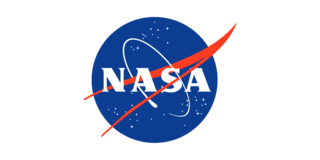Partners and Funding
CHAAT collaborates with many different organizations. Learn more about the projects and partners we have been involved with and the funding of our research by navigating the links below.
Campus Partnerships
Center for Usability in Design and Accessibility (CUDA)

CUDA is an official research and testing center on the campus of California State University, Long Beach (CSULB) that provides usability and accessibility evaluation services. CUDA collaborates with CHAAT to provide students with training on user-centered interface design, which can be applied to the evaluation of NextGen interfaces and tools designed by students trained in CATSAI.
Center for Aerospace Technology in Support of the Aerospace Industry (CATSAI)
Students trained in CATSAI will learn how to design and produce tools to support aerospace technologies.
Research in Dr. Miles’s sensation and perception lab broadly focuses on the interaction between the environment and response behavior, mixed automation, radar displays and modeling situation awareness.
Stress and Technology Applied Research (STAR) Laboratory

Stress & Technology Applied Research (STAR) Laboratory investigates human performance under stress and workload, and how such behavior patterns can inform the design of more effective technological systems. Research focuses on performance outcomes, self-report measures of cognitive and affective states, as well as cognitive neuroscience measures of psychophysiological functioning. An additional avenue of research is individual differences (specifically motivation) in human-technology interaction. There are currently 4 graduate students and 30 undergraduate student research assistants in the lab.
Human Factors and Ergonomics Society (HFES) Student Chapter
The Human Factors and Ergonomics Society student chapter at California State University, Long Beach is dedicated to promoting the understanding and use of human factors. The student chapter organizes and participates in various activities during the year, including an annual student research conference in the spring, always with this goal in mind.
Federal Aviation Administration (FAA) Partnerships
FAA Civil Aerospace Medical Institute
The Office of Aerospace Medicine is responsible for medical programs and services for both domestic and international aviation communities. Their vision is to provide global leadership for Aerospace Medicine in the 21st century. Their goal is aerospace safety through medical excellence, commitment, and teamwork.
National Aeronautics and Space Administration (NASA) Partnerships

Works collaboratively with the FAA conducting research in air traffic management to make safer, less expensive and more efficient air travel a reality. Engages in information and education outreach, forms collaborative partnerships, and fosters commercial application of NASA technologies. Ames is developing NASA Research Park, an integrated, dynamic research and education community created to cultivate diverse partnerships with academia, industry and non-profit organizations in support of NASA’s mission.
The mission of the Airspace Operations Laboratory (AOL) is to provide a better understanding of roles, responsibilities, and requirements for human operators and automation in future air traffic management (ATM) systems. AOL focuses on developing and evaluating operational concepts and technologies for the Next Generation Air Transportation System (NextGen) in a high-fidelity human-in-the-loop (HITL) environment.
Control TRACON Automation System (CTAS)
The Center TRACON Automation System (CTAS) provides automation tools for planning and controlling arrival air traffic. CTAS is designed to increase fuel efficiency, reduce delays, and provide automation assistance to air traffic controllers in achieving acceptable aircraft sequencing, separation, and improved airport capacity. Accomplished without decreasing safety or increasing controller workload.
Flight Deck Display Research Lab (FDDRL)
FDDRL collaborates with CHAAT, serving the aviation community through world-class research. Works to increase the capabilities of the flightdeck crew by expanding their roles and responsibilities. Uses new tools and concepts, to increase airspace capacity and safety.
NASA’s Langley Research Center was the initial home of the first astronauts, the Mercury 7. Its reputation for exceptional research started soon after Langley was established as the United States’ first civilian aeronautics laboratory in 1917. Now the Center is working to design and test a new launch abort system for the next generation space capsules. The Langley is known for solving tough problems in air, space and earth science. Researchers at Langley are focusing on some of the biggest technical challenges of our time: global climate change, access to space and revolutionizing airplanes and the air transportation system.





